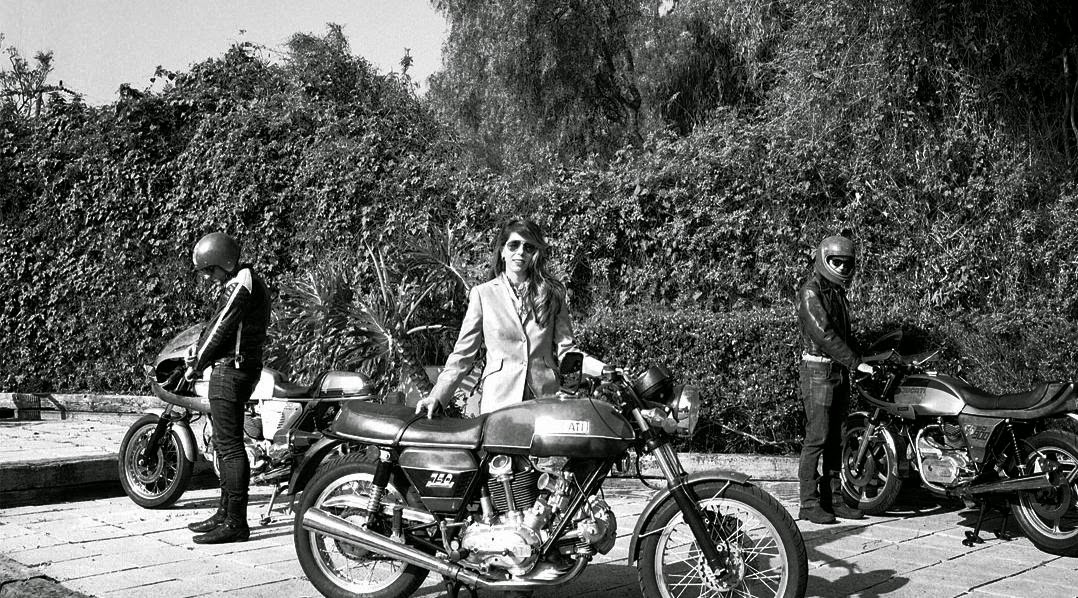The Flamethrowers by Rachel Kushner
Meet The Author
According to Wikipedia, Rachel Kushner was born in 1968. I don't find anything to confirm that, but I also don't find anything to contradict that, so I'm buying it. According to a profile on her from The New York Times:Ms. Kushner was born in Eugene, Ore., to bohemian parents who were completing doctorates in biology and spent long hours in their labs. For a time the family, which included an older brother, lived in a Merry-Pranksters-like bus. “Our parents had Ph.D.’s, but we were dirty ragamuffin children,” she recalled. “I spent a huge amount of time by myself. I daydreamed and learned how to be alone and not be lonely.”Rachel Kushner is also the author of an earlier critically acclaimed novel, Telex From Cuba, which also was nominated for a National Book Award as was The Flamethrowers, making Ms. Kushner the only writer to have both her first two novels nominated for a National Book Award. On YouTube, you can find a video of her talking to the Los Angeles Review of Books about The Flamethrowers.
Her father, whose Jewish New York family was in the Communist Party, collected beatnik poetry and rode a Vincent Black Shadow motorcycle. Her mother, who Ms. Kushner said once slept in Central Park for a summer, is from a family of St. Louis Unitarians who lived for a time in pre-revolutionary Cuba. Ms. Kushner’s grandfather worked for a nickel-mining company there, the inspiration for her first novel, “Telex From Cuba,” nominated for a National Book Award in 2008.
At 16, Ms. Kushner enrolled at the University of California, Berkeley, where she majored in political economy, raced on the ski team and managed to get good grades while feeling unprepared, she said, academically and socially. To help with the bills, she worked as a waitress in a blues bar where she was frequently the only white person.
...
In 1997 she headed for New York City and Columbia University’s master of fine arts program, where at 29 she was older than most of her classmates. Jonathan Franzen was among her teachers. “I had the sense that she came from a place where nobody had told young women what they could and couldn’t be,” he said. “She was strikingly curious and well informed about the mechanics of the real world, and was neither afraid of intellectual content, nor in any way pretentious about it.”
At the end of the paperback edition of The Flamethrowers that most of us read, there is is an article called "Curated by Rachel Kushner," which contains a commentary on the cultural influences that inspired The Flamethrowers. This article was originally published in the Paris Review. An electronic online version of this article is available, which contains all the images reproduced at the back of the book plus a few that were not in the back of the book, all with commentary on each image. For those who were intrigued by the story of Jack Goldstein, and the record, "The Murder," which leads off the Paris Review article, here is the substance of "The Murder," as played back on YouTube for a little light easy listening.
Times and Places Visited in The Flamethrowers
Italy Before World War I
Sandro Valera's father (referred to only as "Valera" in the chapters in which he appears) along with his friends represent a cultural movement that appeared in Italy shortly before World War I—Futurism. This YouTube short gives an overview of what Futurism was all about.
The Great American Desert
 |
| "Spiral Jetty" by Robert Smithson |
 |
| Craig Breedlove or Flip Farmer? |
New York City in the Mid-to-Late 1970s
I think everyone my age has kind of an idea what the late 1970s scene was like in New York City, but I had a hard time finding any actual material about it on line. I did find some photos by Allan Tannenbaum in this article appropriately entitled "Dirty, Dangerous & Destitute." There is also this 10-minute film, "News from Home," by Chantal Akerman, which Rachel Kushner said was one of the sources of inspiration for The Flamethrowers. Apparently the film is supposed to have a voice-over of Akerman reading letters from her mother at home in Belgium while she sweeps the streets and the skyline with her camera. This YouTube version is minus voice-over, but I have a feeling it was in either Flemish or French anyway.
Italy in the 1970s
 |
| Strike at Fiat Plant in 1969 |


No comments:
Post a Comment